Erez Marom Photography
Desert Oddity: Shooting Under Rare Conditions in Namibia
Posted on 20th August, 2019 - Back to Blog Listings
In the middle of 2018 I guided a group of photographers in Namibia. It had been some time since my last visit and I was very keen to return, but little did I know that this beautiful African country would see some very rare weather conditions during my visit. In this article I'll describe what happened.
It was a peculiar time in Namibia, with some very weird weather. A massive thunderstorm hit about 1500 km north of where that kind of thing normally happens, and bizarrely enough, it happened exactly when we were there. We were rained on during our entire visit to the ghost town of Kolmanskop, which my participants weren't too happy about, since it meant they were missing the famous light coming out of the windows of the buildings.

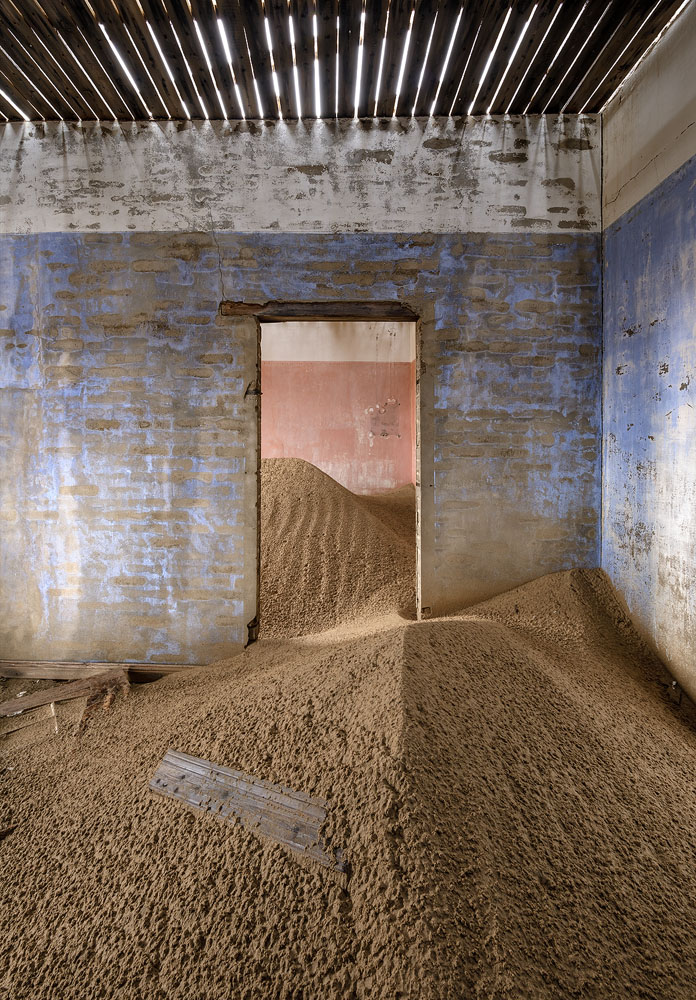
Locals said the last time it had rained that hard was 12 years ago, and small children were panicking, having never experienced such a storm in their lifetimes! Several 100-year-old roofs collapsed, further restricting access.
I, for one, enjoyed the rainy conditions. The dunes inside the rooms were all pocked with raindrops, which contributed a great deal to the uniqueness factor.
But Kolmanskop was just the forerunner. After wrapping things up there, we headed to what was planned to be the highlight of the trip: Sossusvlei Desert. A local friend told me to watch the dunes upon arrival: if there were lines on the dunes, it meant that there was heavy rain in the desert. I have to admit I didn't really understand what he was talking about - lines on the dunes? But upon seeing the dunes, I immediately got it.
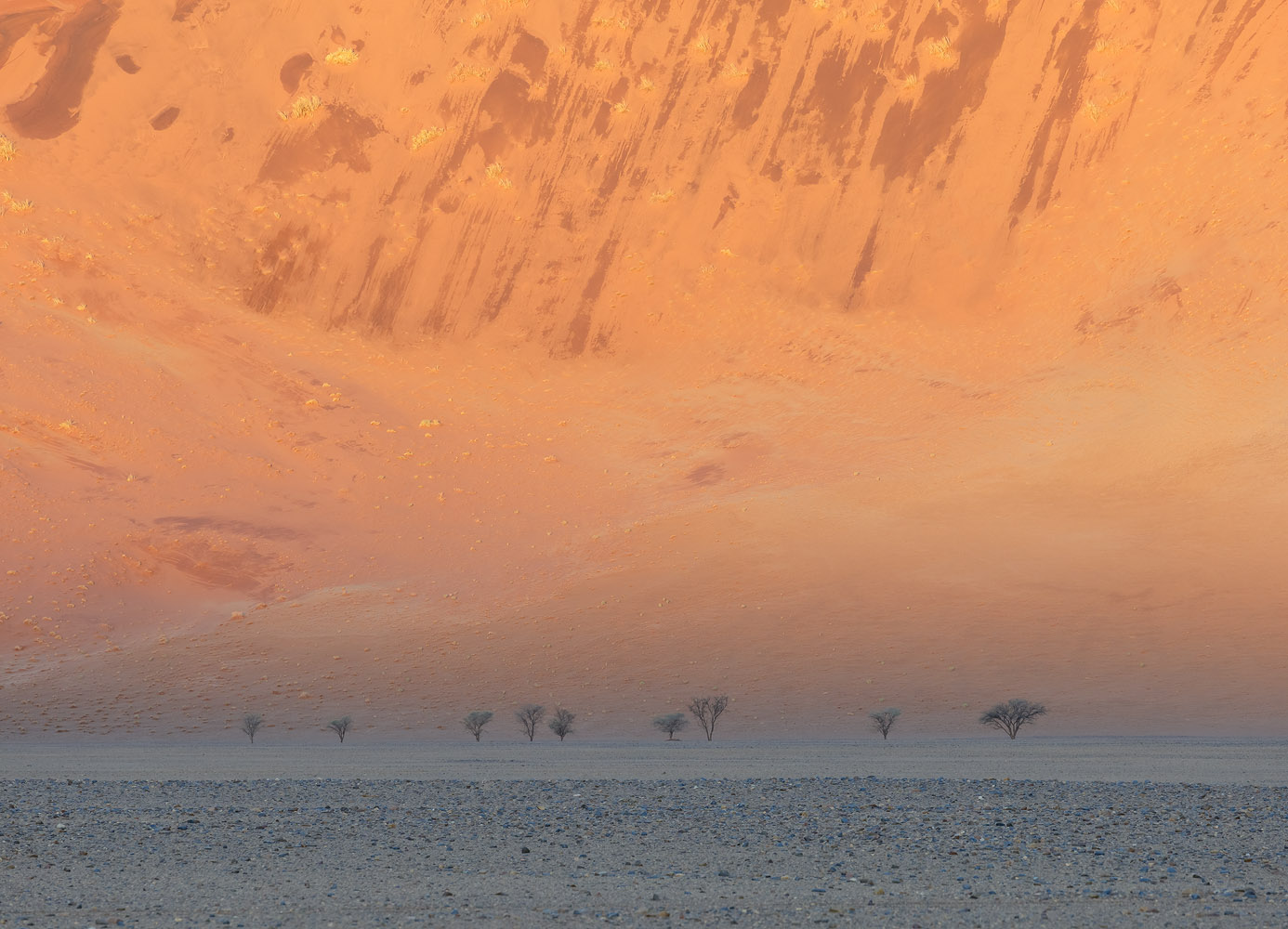
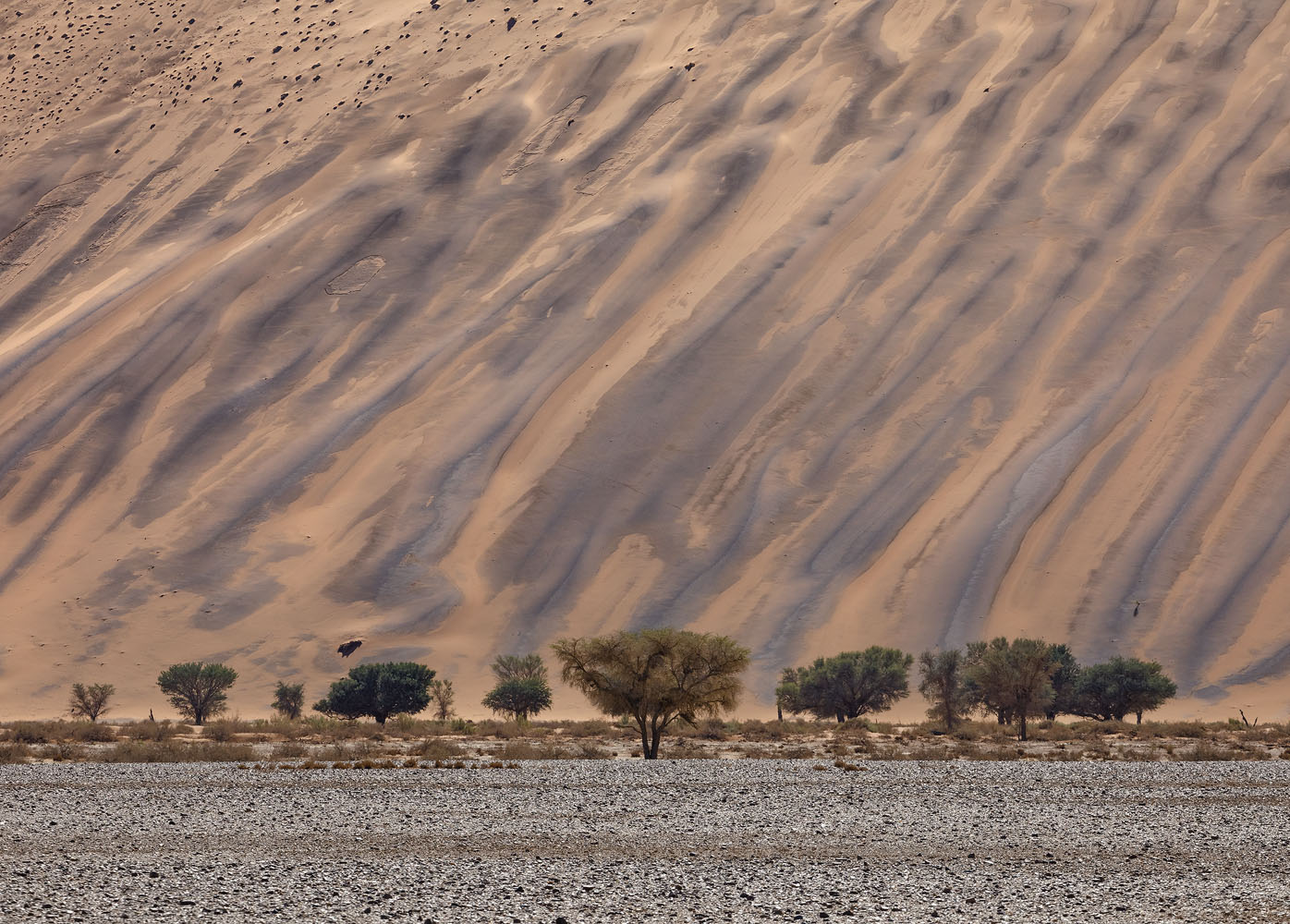
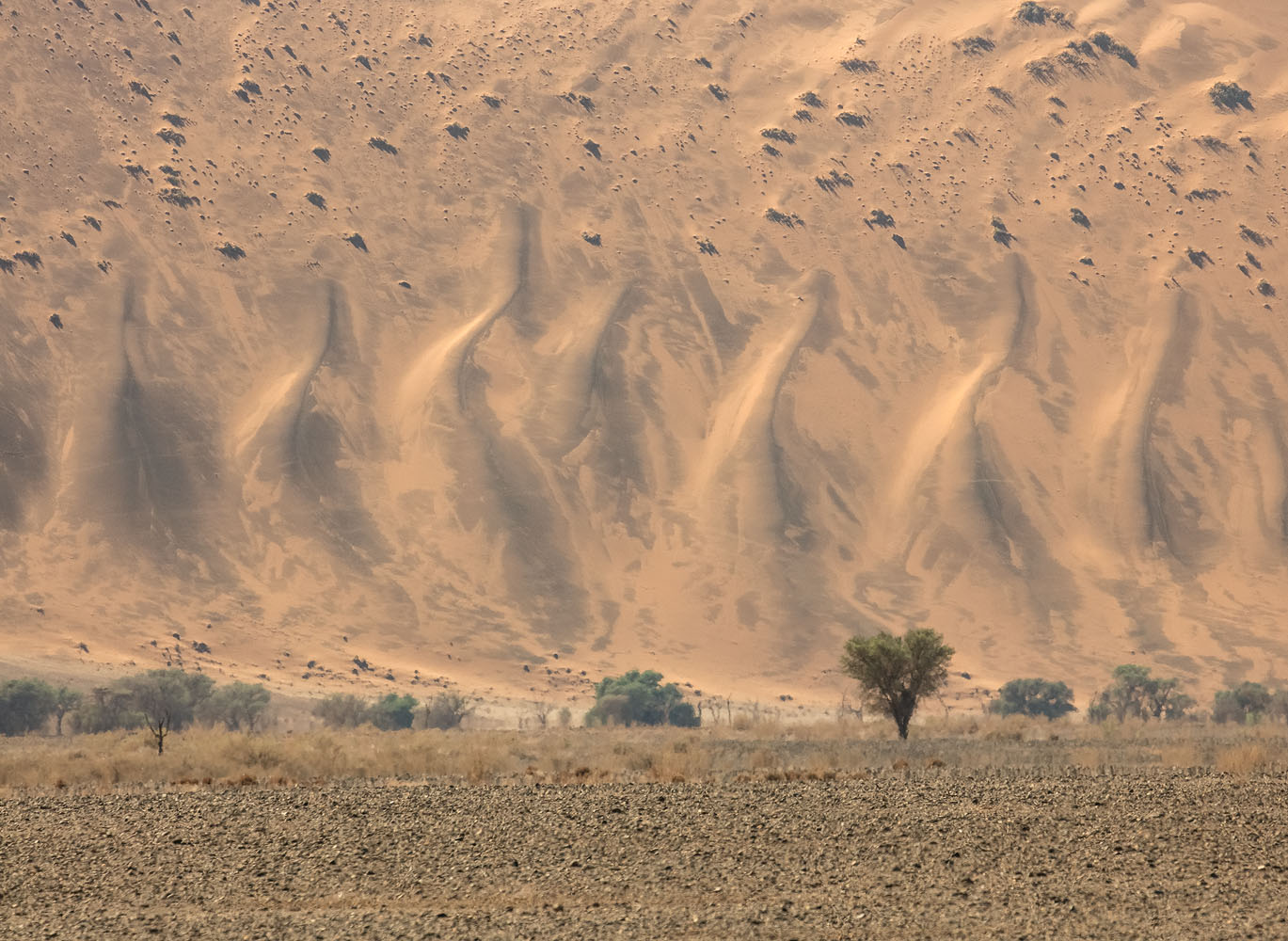
I could barely contain my excitement for the next morning shoot. We were scheduled to shoot in Deadvlei, and heavy rain over the Sossusvlei dunes meant a chance for water in the pan. Unfortunately the Namibian sun is hot, and most of the water had evaporated before our arrival. A very small number of tiny puddles remained, and my group and I took advantage and produced some unique shots.
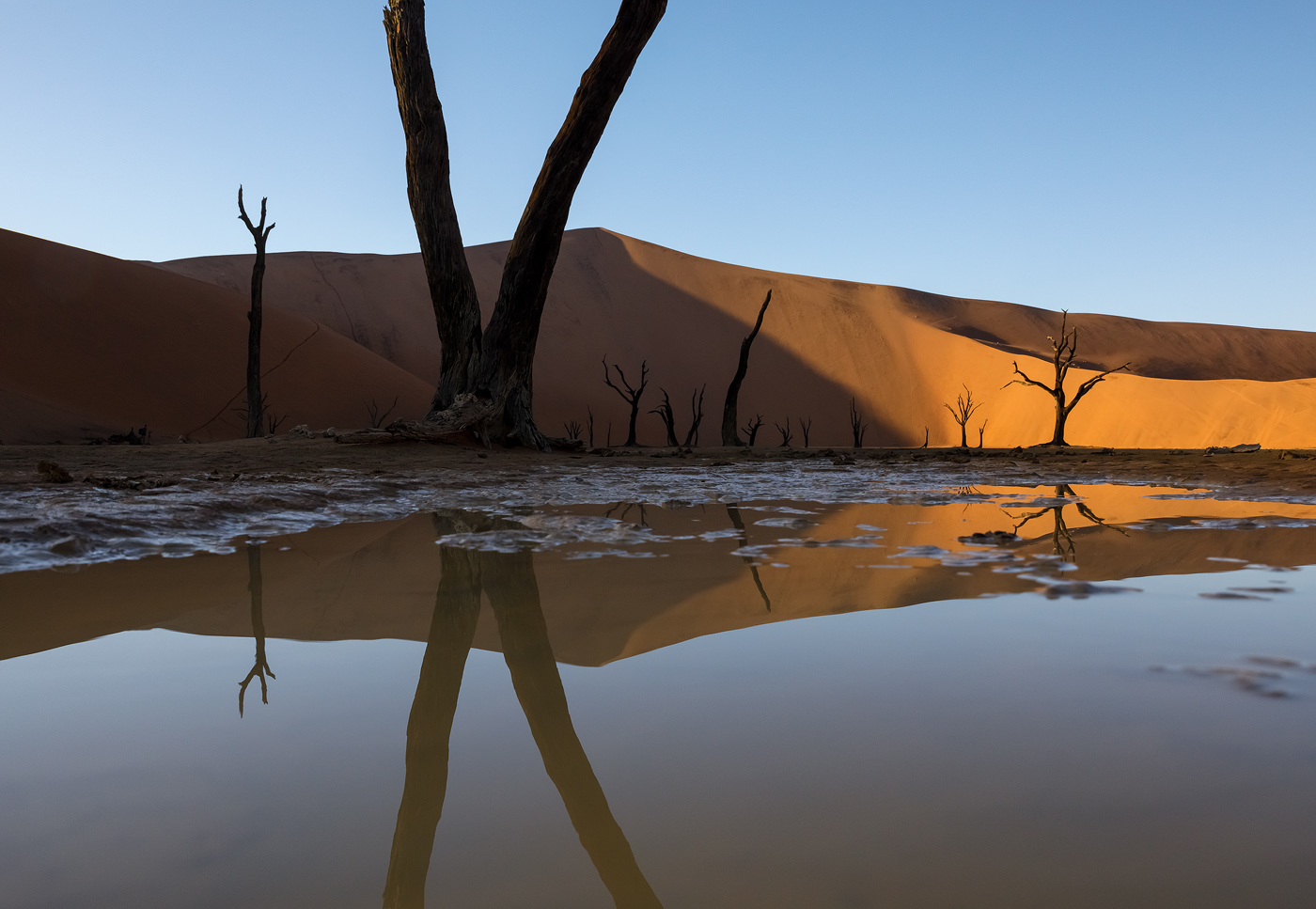
I returned to the lodge quite happy with my results, but I knew that by the next day there would be no water left. In the morning I woke up expecting a standard Deadvlei shoot. But when we reached the end of the short hike, something marvelous appeared before us. The pan was absolutely full of mist!
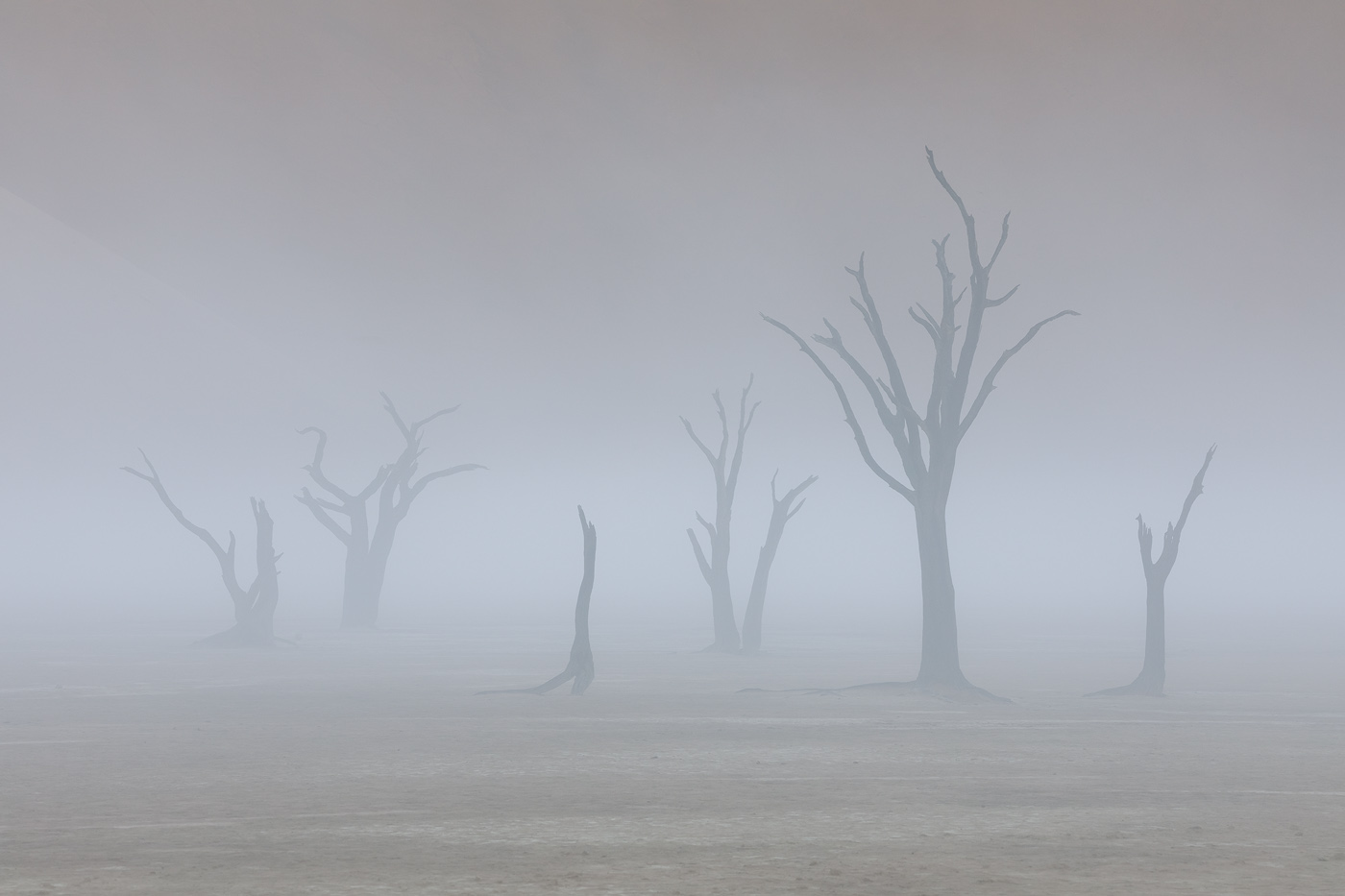
I quickly pulled myself together and informed my participants that we needed to make very good use of the mist. It could dissipate before sunrise or even in a few minutes, and so deep focus and efficiency was needed to capture as many good images as possible.
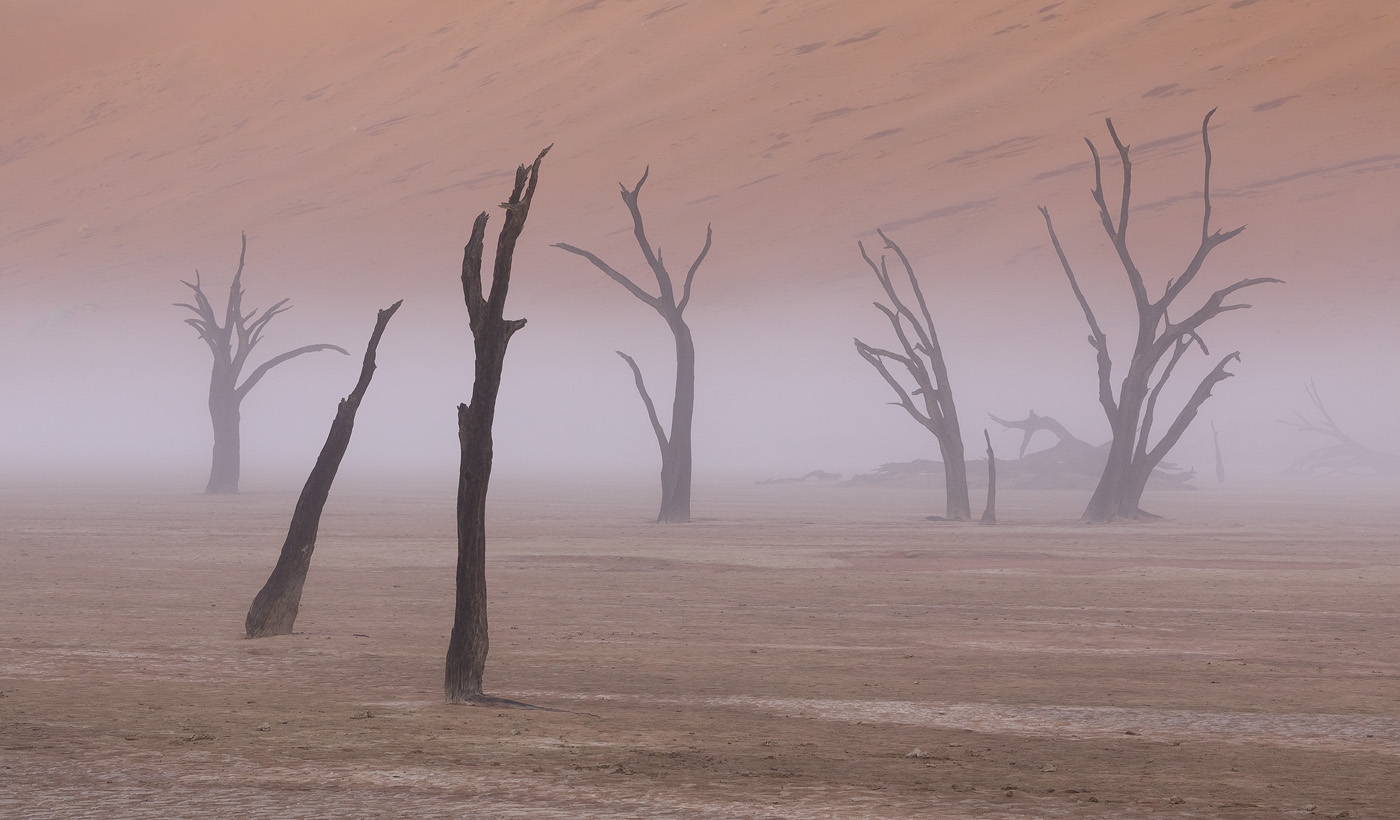
We kept shooting, and the mist was moving back and forth in the pan, but it was still there. In fact, at times it seemed to be getting thicker! When the sun started hitting the dunes, I knew it was money time.
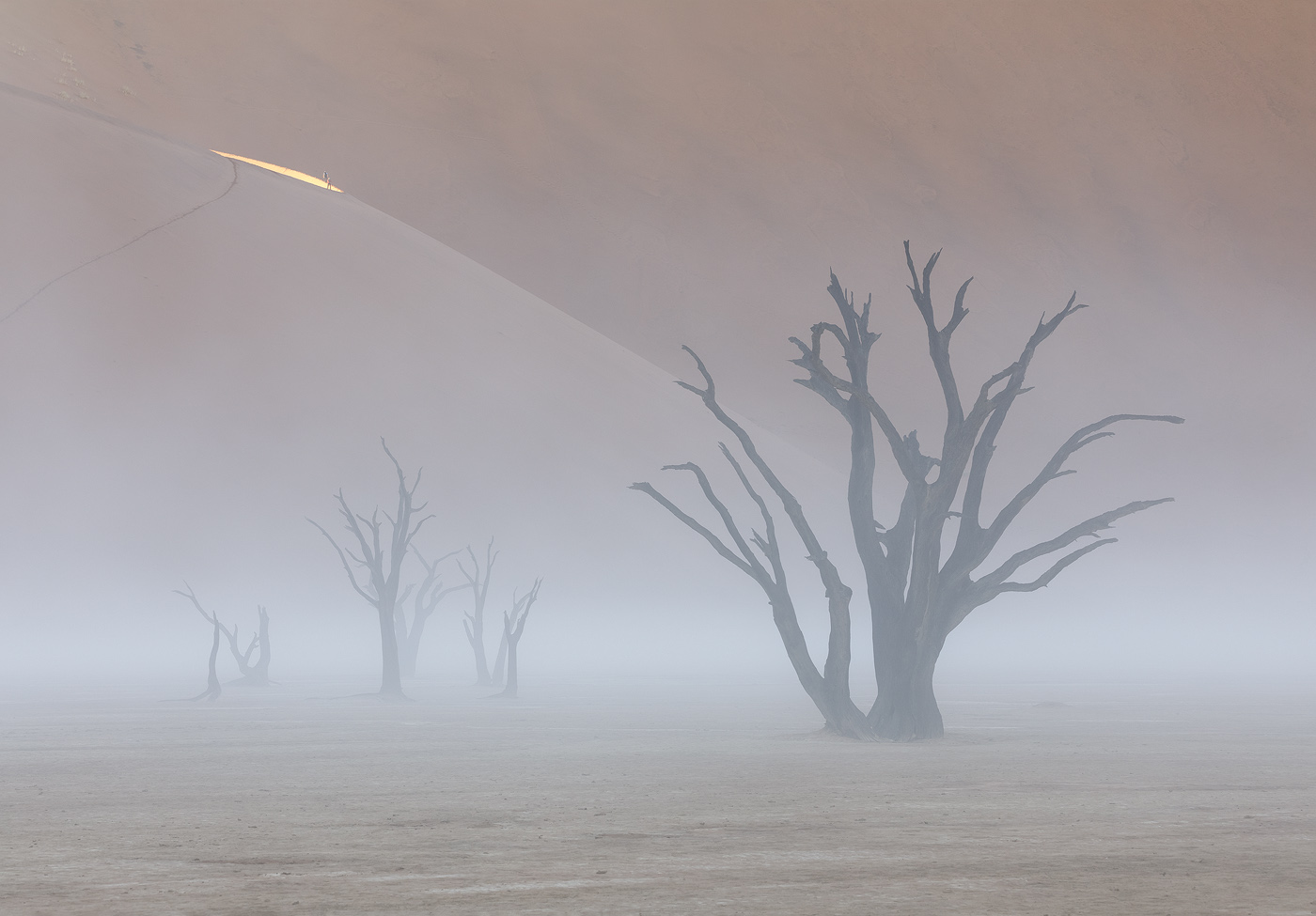
As the sunrise progressed, I tried to utilize the mist to my advantage, and used it to create depth in my images but including trees in different distances. The further trees were deeper in the mist.
.jpeg)
Many more compositions presented themselves, some more unusual, some less so. But all were beautifully enhanced by the mist.
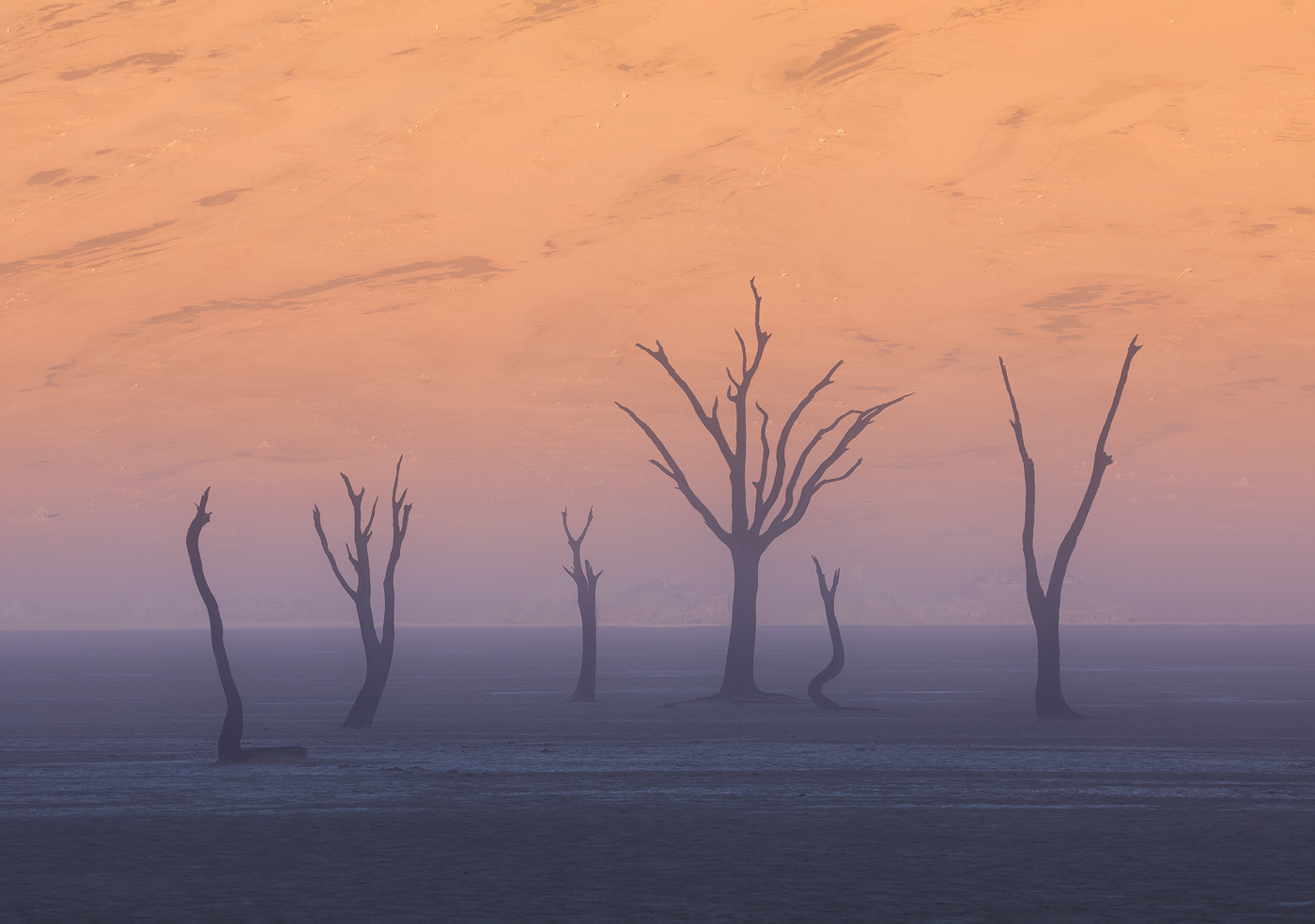
As the sunlight began moving across the pan, I could incorporate the lines it created in the images, to create even more interest.
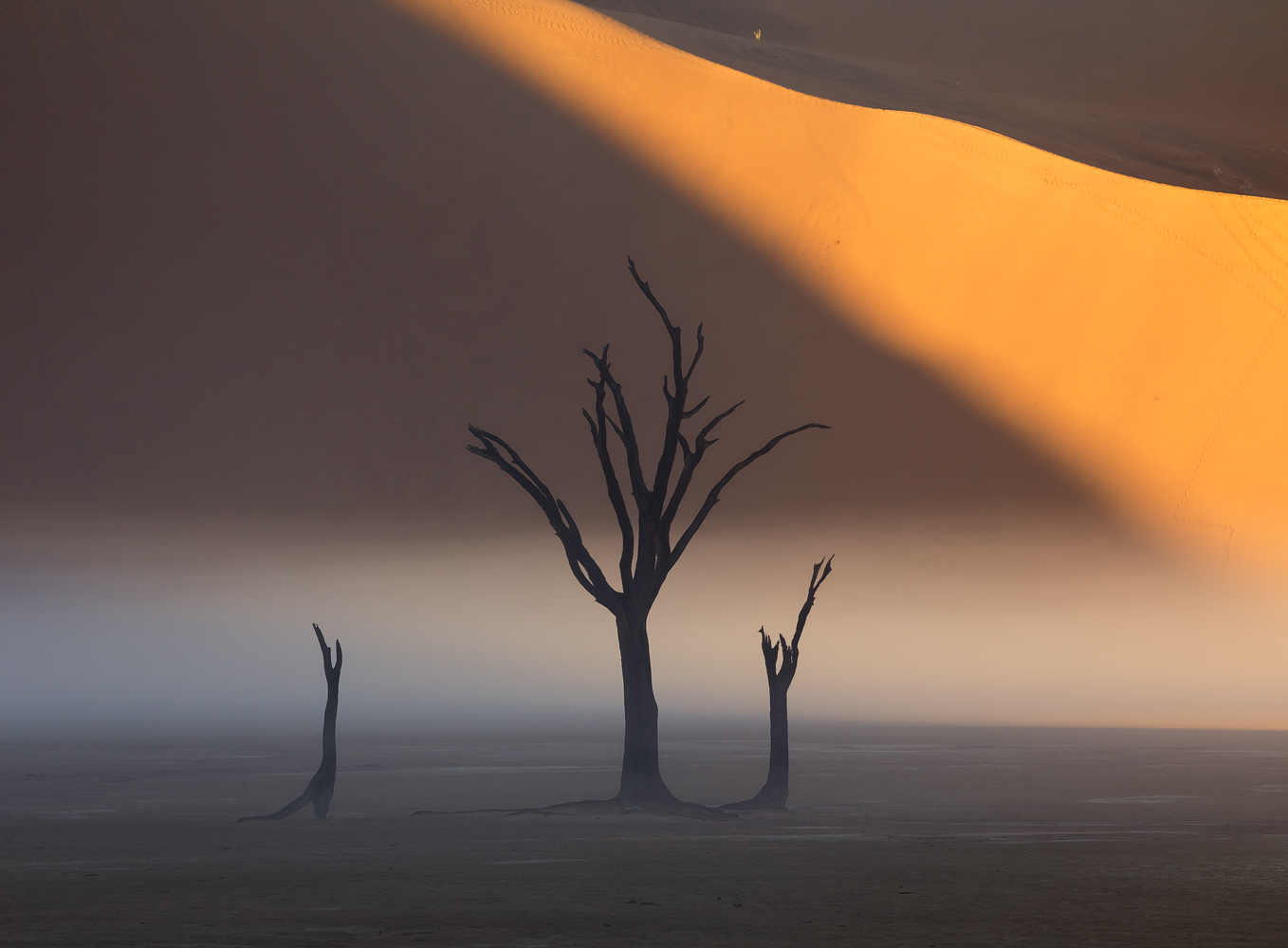
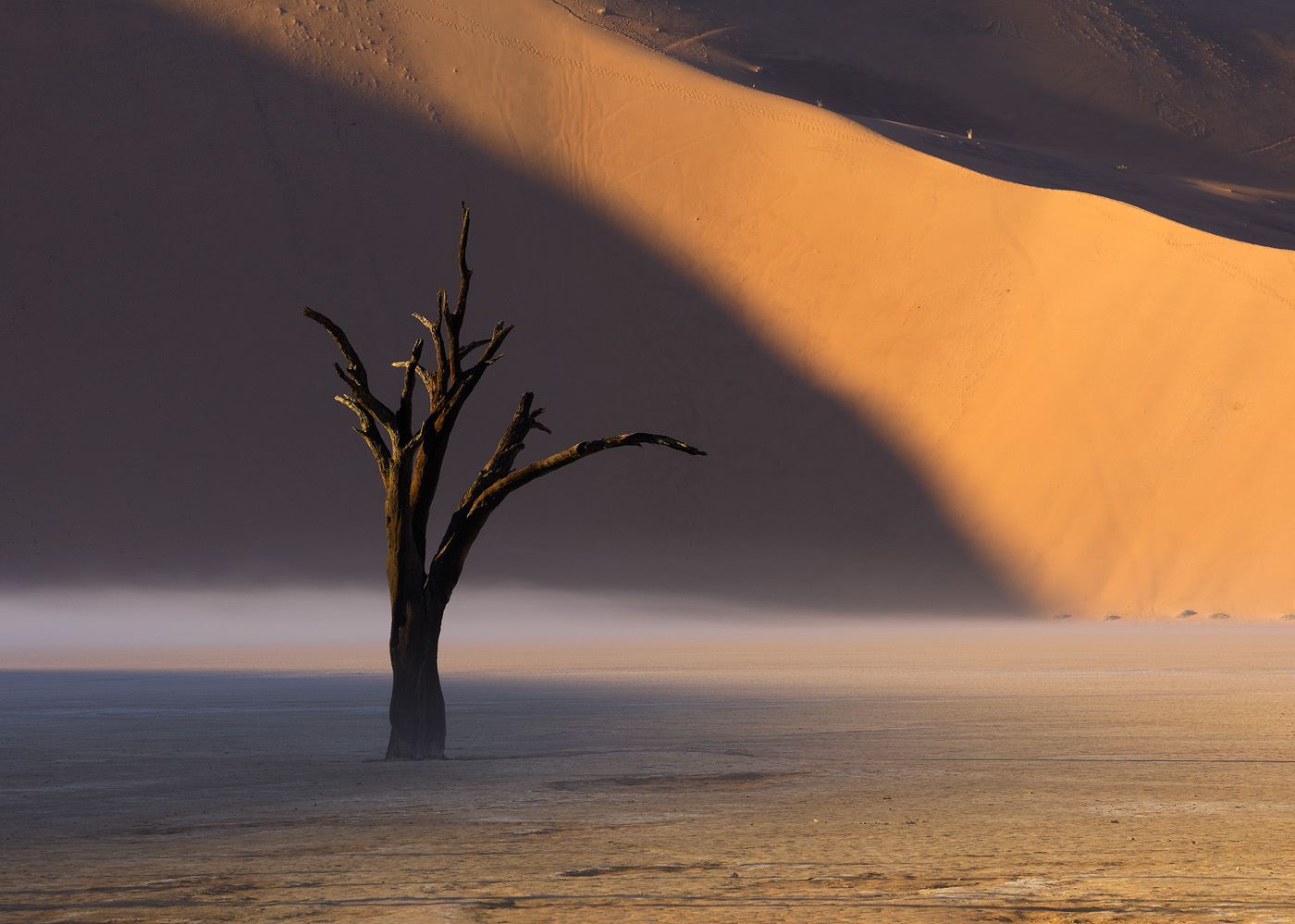
When the mist finally dissipated, we could all take a breath and digest what had happened. That once-per-decade storm that left enough water to allow reflections had also left a large amount of moisture in the air, creating the mist. We couldn't help feeling incredibly fortunate to have witnessed this special combination of circumstances.
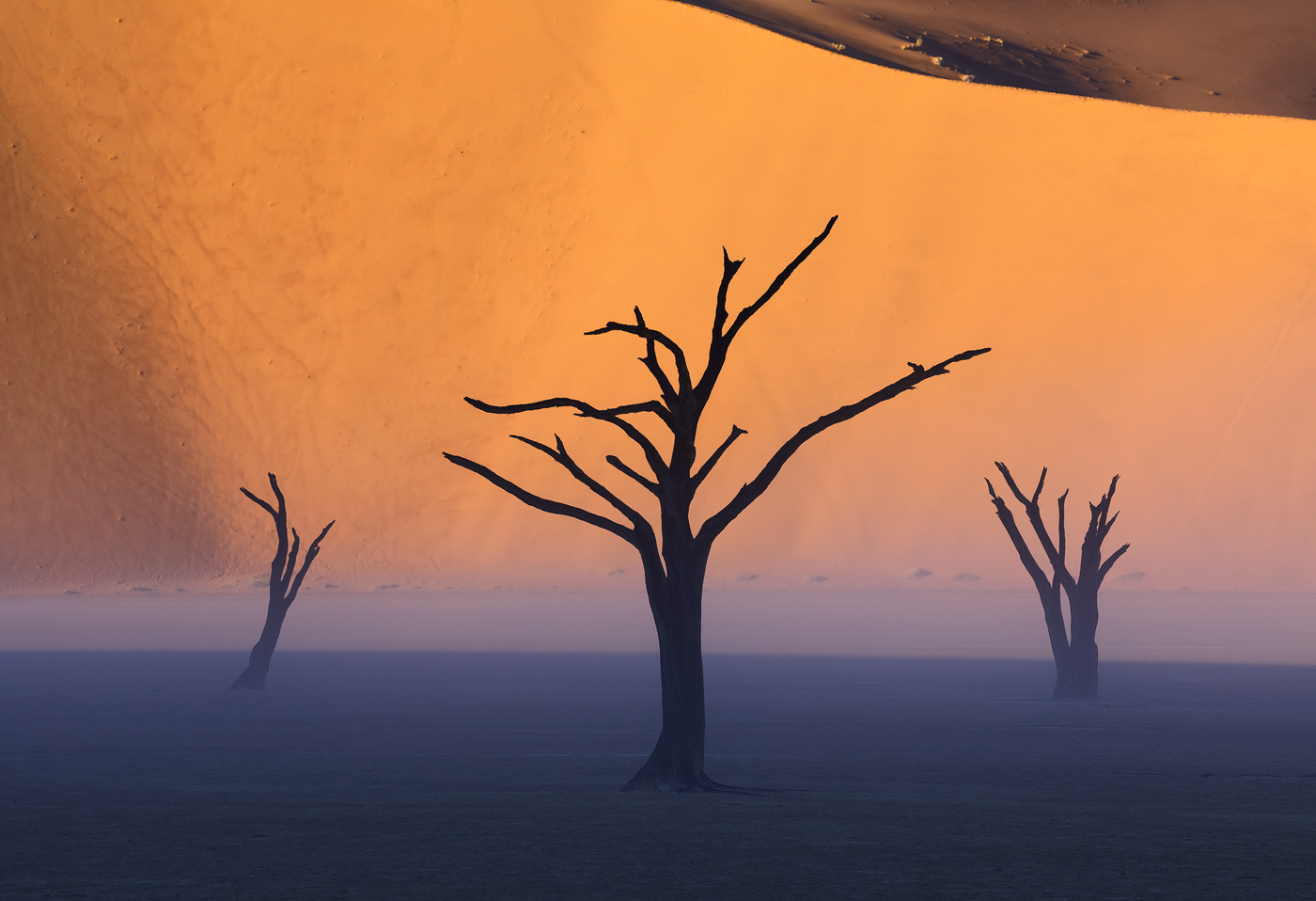
Luck is a major factor in nature photography. While a good photographer can create good imagery in sub-optimal conditions, there are times when it all comes together, and the photographer who is ready - and focused - will reap the rewards.
